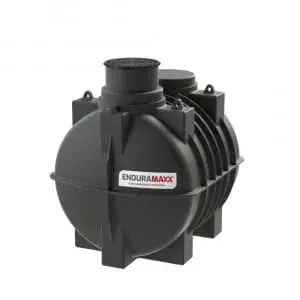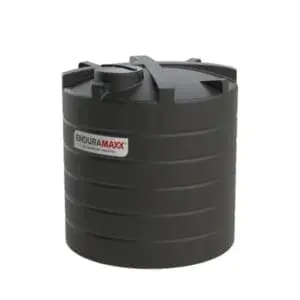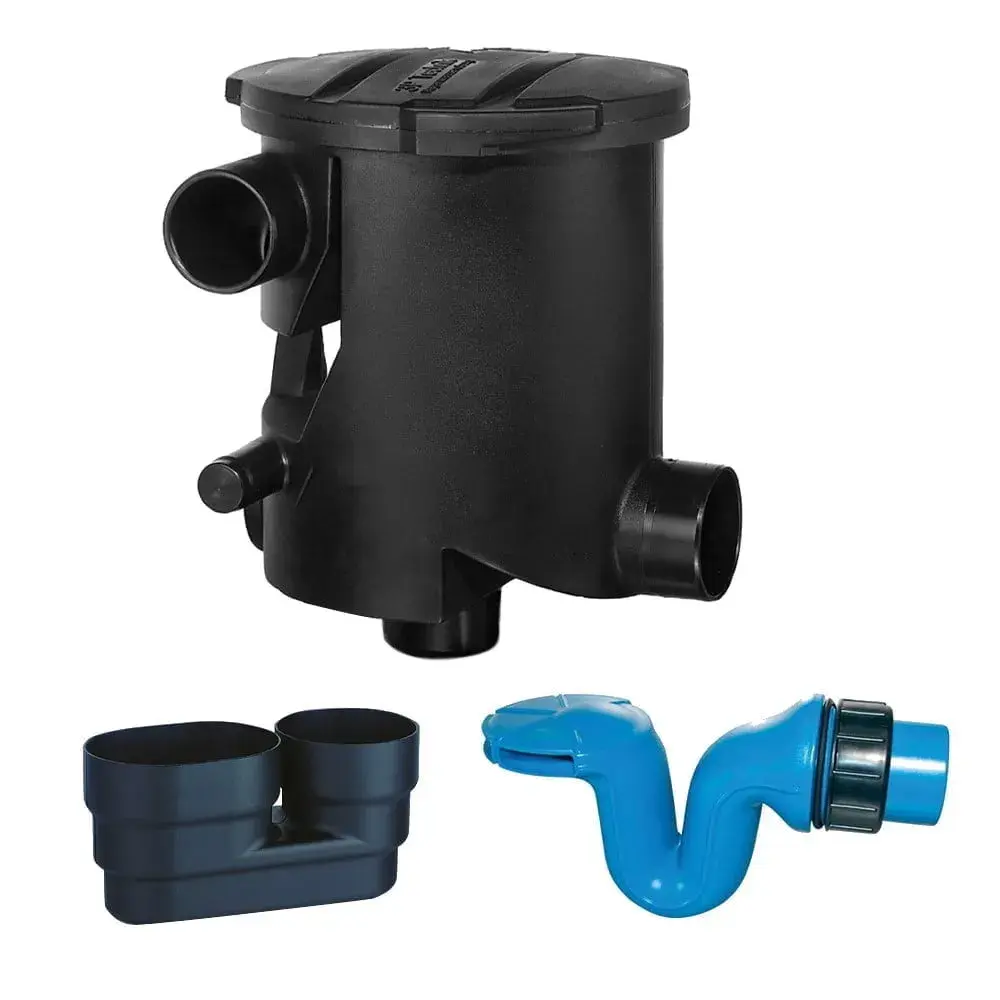Commercial rainwater harvesting is both ecologically friendly and a money-saving enterprise. It makes sense to consider how your company can benefit from not only the reduction in water costs but also in helping to look after our environment. Water is essential to life and the earth is drying out!
We need to consider the longer-term effects of the decisions we make today. With water becoming increasingly scarce and our demands becoming increasingly imperative we need to gather and use this resource economically and with an eye to the future.
Industry uses great quantities of water – and by installing an efficient rainwater harvesting system many of them could become more self-reliant, cutting their use of the mains water supply by 40-50 %.
Will England run short of water?
According to the Environmental Agency England may suffer from severe water shortages by 2050. We need to increase our water supply. We need to cut down on demand and we need to reduce waste to prevent this. At present England uses 20 trillion gallons of water every year – that’s a lot of water!
Our population is growing – from 67 million now it is expected to rise to 75 million by 2050. Demand is growing both in our homes and in our expectations for goods we can buy. The consumer industry is expected to grow.
Climate change is reducing our annual rainfall – for example – in May 2020 the rainfall in England and Wales was the driest since records began in 1910 – just 17% of the normal rainfall fell, even less in some areas.
The problem is even more threatening in many other parts of our world. Freshwater seas are drying up, rivers are carrying less water and underground aquafers are storing less.
By harvesting rainwater, we can help to reduce the effects of climate change on our water resources. You can prepare for periods of drought by storing rainwater in our tanks, and you can reduce our reliance on the mains supply at the same time cutting the cost of your water bill.
Green, blue or grey?
Green water is rainwater and blue water comes from the ground – rivers, lakes or aquifers. Grey water is the wastewater that comes from washing machines, baths and sinks.
In the UK, our mains water comes from blue water – i.e., water from rivers, lakes, and reservoirs or from groundwater and underground aquifers. It is then treated to make it safe for us to drink or to use in our homes and in our industries. As our population increases the demands for these supplies compete, and one can see the level of water in for example the Manchester water supply at Thirlmere, where the level of water in the lake clearly drops during dry weather spells.
Definition of harvested rainwater
Just to be clear – commercial rainwater harvesting is using rainwater that has been collected from roofs and other surfaces above the ground. It can be collected above ground by gutters and pipes and stored in tanks. The tanks must be cut off from other water supplies to prevent contamination. In some conditions, you will need a water abstraction licence.
Uses of rainwater in commerce and industry
Many of our industries are water-hungry. Globally, industry and agriculture use about 90% of the water we take. Yet mains water is often at a high quality that is not necessary – the rainwater would be perfectly satisfactory. Take an office block: how many times do you think the toilet might be flushed per day? Rainwater is fine for this – and would save not only mains water but also the reduced water bill for the owners.
In many cases, there is far too much water wasted – here in the UK we do tend to take it for granted. But when consumers can recycle the water, use it only where needed and return clean water to the environment then some of the ecological cost can be reduced.
Water is used for manufacturing, washing and cooling, the production of plastic and chemicals, refining petroleum and producing food and paper. It takes 100 litres to make one pound of plastic and 6,000 litres to make one pound of cotton. The water calculator tells you about the hidden water in everyday products.
Among the thirstiest industries in the UK are the farming of vegetables, grain and fruit, and the textile industry – one pair of jeans needs around 7600 litres of water. Meat production, drinks (no surprise here!), to produce one pint of beer uses 140 litres of water. The car industry is a major water user. To produce just one average-sized car they need 147,631 litres of water. This includes coating and treating the surface, spray painting, washing and rinsing plus cooling.
Some advantages for industry using rainwater
- The softer water supplied directly by rain can be gentler on machinery hard water that corrodes and causes limescale to build up in the supply pipes.
- Many industries have a large roof space – just a wasted resource! This could be used to profit from rainwater collection. There is a quicker return on investment for larger sites.
- Water bills are rising year on year. Rainwater harvesting can reduce water bills significantly – as well as being an onsite presence during periods of drought – and these are likely to increase.
- The Enhanced Capital Allowance Scheme provides funds for efficient water technologies.
Examples where rainwater harvesting has been used
The Museum of London has a 25,000-litre storage tank for rainwater. The water is used both in their roof-top garden and in the toilets inside.
The Millennium Dome, with its large curved roof (90,000 m2) collects the water for storage.
Also in London was the Olympics. The velodrome collected rainwater and reduced the reliance on the mains by 40%.
Other areas where rainwater is harvested include the Honda dealership in Manchester, the Imperial Tobacco Head Office in Bristol use it to flush toilets and there is a large system in Rochdale as well, which recovered the cost of installation in a year.
Water quality in the industry
The industrial requirements for water quality vary, and in some cases, they require very high and pure standards where rainwater is not suitable. For example, water used in the food industry must meet specific standards that depend upon the type of food being produced. The manufacturers of computer components and chips which need ultra-pure water are focussing on ways to reuse their waste-water.
The oil and gas industries use vast amounts of water and rainwater is suitable for many of their processors. Water is used for such things as the cleaning of tanks, cooling, extractions, washing and more.
Cooling systems may in some cases use rainwater that has been filtered and purified. The paper industry uses huge volumes of water in pulp making and processing, manufacturing the paper or board, bleaching and washing. This leads to a lot of contaminated water to dispose of. One tonne of paper needs 54,000 litres of water for its production.
So paper companies are seeking ways to reduce their reliance on the mains supply and rainwater is making a comeback. It is relatively pure and since ten inches of rain can be collected from a 1,000 ft roof and will produce around 27,000 litres of water – it’s worth a look!
When you need a water abstraction licence
You do not need a licence to use harvested rainwater provided it is not mixed with water from another water supply and provided it is not harming the environment. It must not interfere with the watercourse flow within the catchment area.
When you combine the harvested rainwater with water from another source you may need a licence, when you discharge it into any inland water system. This includes land drainage, from underground strata, gravity intake or mixed with licensed water from anywhere else.
You are not permitted to extract so much water that you deplete groundwater or local inland water below safe levels for the environment. The amount you can safely extract is measured by flow indicators and described in the Water Framework Directive
You will have to comply with the conditions set out in the RPS which is reviewed every 2 years. You can contact the Environment Agency for further information here
Commercial rainwater harvesting storage tanks
Enduramaxx has a comprehensive array of storage tanks to suit any local conditions. Our vertical storage tanks range in capacity from just 100 litres to a massive 90,000 litres. To accommodate low roofs we have a range of low profile tanks, our 5,000-litre capacity low profile tank is only 1300mm in height.
We even have tanks suitable for underground installation. These range from 800 litres to 9,500 litres.
Rotationally moulded tanks
Our one-piece rotationally moulded tanks ensure that leakage from joints in the tank’s structure cannot occur. The tanks are manufacture in Peterborough and distributed all over the UK and into Europe.
The filters
There are various water filters suited to every collection point. The calming effect on the water flow allows sediment to settle, and leaves and moss are trapped. They can be fitted to existing tanks as well as new systems of rainwater collection.
Practical and legal considerations
Our experience can save you headaches! We work with many rainwater system installers so can help with the best installation for the requirement to avoid hassle.
Calculating the water you can save
The method for rainwater saving calculation is shown on our rainwater water calculator on our website here. For help with this call us on 01778 562810. We shall be happy to assist you.
On-site visits
Our on-site visits allow you the opportunity to discuss your specific needs with our knowledgeable staff. They can assess your locality, add up the costs and tell you the likely savings. Their detailed knowledge can advise you as to the best system for your requirements, and make the necessary arrangements. One thing they will also do is to tell you if, in their opinion, you will NOT benefit from installing a rainwater harvesting system.
Why commercial rainwater harvesting makes sense
Our climate is changing. The earth is drying up and water is becoming an increasingly important resource. Even here in the UK water shortages do occur, and dry spells are becoming more frequent.
Rainwater is free and can provide water that is suitable for many processes that at present use mains water. This might include industrial processes or toilet flushing in office blocks.
Of course, there is a cost involved in setting up a rainwater harvesting system, and there are legal regulations to navigate. This is where Enduramaxx can help you. We not only have a huge range of storage tanks and all the equipment you need but also the expertise to answer all your questions. Why not give us a ring on 01778 562810 to discuss your needs, we are here to help.
References
Ref 1 Groundwater drought in the UK
Ref 2 Water use by industry in England
Ref 3 Holistic impact assessment and cost savings of rainwater harvesting
Ref 4 Energy and carbon implications of rainwater harvesting and greywater recycling
Posts By Topics
- Blog (303)
- Chemical Storage Tanks (118)
- Chemical Dosing Tanks (114)
- Chemical Tanks (114)
- Water Tanks (58)
- Rainwater Harvesting Tanks (43)
- Vertical Rainwater Tanks (31)
- Vertical Storage Tanks (31)
- Cone Bottom Tanks (19)
- Conical Cone Tanks (18)
- Rainwater Harvesting (17)
- Water Bowsers (15)
- Horizontal Tanks (14)
- Potable Water Tanks (13)
- Farming (9)
- Case Studies (8)
- Industrial Storage Tanks (7)
- Liquid Fertilser Storage Tanks (6)
- WRAS Approved Potable Tanks (6)
- Wine and Beer Production (6)
- Horizontal Transport Tanks (5)
- Microbrewery (5)
- Rainwater (5)
- Category 5 Break Tanks (4)
- Cider Production (4)
- Mixer Tanks (4)
- Molasses Tanks (4)
- Polyethylene tanks (4)
- Rainwater Filter Kits (4)
- SPECIALIST & BESPOKE TANKS (4)
- Bunded Tanks (3)
- Slimline Tanks (3)
- WRAS Approved (3)
- Clarification Tanks (2)
- Crosslinked Polymer Tanks (XLPE) (2)
- Fertiliser Tanks (2)
- Sump Tanks (2)
- Tank Installation (2)
- Water Butt (2)
- underground water tanks (2)
- ACCESSORIES & FITTINGS (1)
- ATV & UTV SPRAYING UNITS (1)
- Above Ground Effluent Tanks (1)
- Bespoke Tank Frames (1)
- Category 5 Turret (1)
- Caustic Soda Tanks (1)
- Closed Top Bunded Tanks (1)
- Craft beer (1)
- Effluent Tanks (1)
- Enduramaxx (1)
- Ferric Chloride Tanks (1)
- Fire Safety Regulations (1)
- Fire Sprinkler Water Storage Tanks (1)
- Industrial Water Tank (1)
- Open Top Bunded Tanks (1)
- Open Top Cone Tanks (1)
- Open Top Vertical Tanks (1)
- Polyethylene Potable Water Tanks (1)
- Polyvinylidene Fluoride (PVDF) Tanks (1)
- Polyvinylidene Fluoride Tanks (PVDF) (1)
- Pressure Washers (1)
- Pro Series Spot Sprayers (1)
- RWH (1)
- Sodium Hydroxide Storage Tanks (1)
- Sprayer Fill-up Tanks (1)
- Uncategorised (1)
- liquid fertiliser tank (1)
Sign up to the newsletter
enduramaxx.marketing
Related Posts
Rainwater Harvesting On The Farm: Is It Right For You?
Rainwater harvesting on the farm – water is essential for farming – but the supply varies from...
Rainwater Harvesting FAQs | Enduramaxx
Rainwater Harvesting FAQs – rainwater harvesting is the process of collecting rainwater that lands...
Water Shortages & Rainwater Harvesting Grants
Water Shortages & Rainwater Harvesting Grants - Water is a vital component in any industry, but...
Related Products
From £1,080.00 inc. VAT
£900.00 exc. VAT
From £1,344.00 inc. VAT
£1,120.00 exc. VAT
From £768.00 inc. VAT
£640.00 exc. VAT
£480.00 inc. VAT
£400.00 exc. VAT







